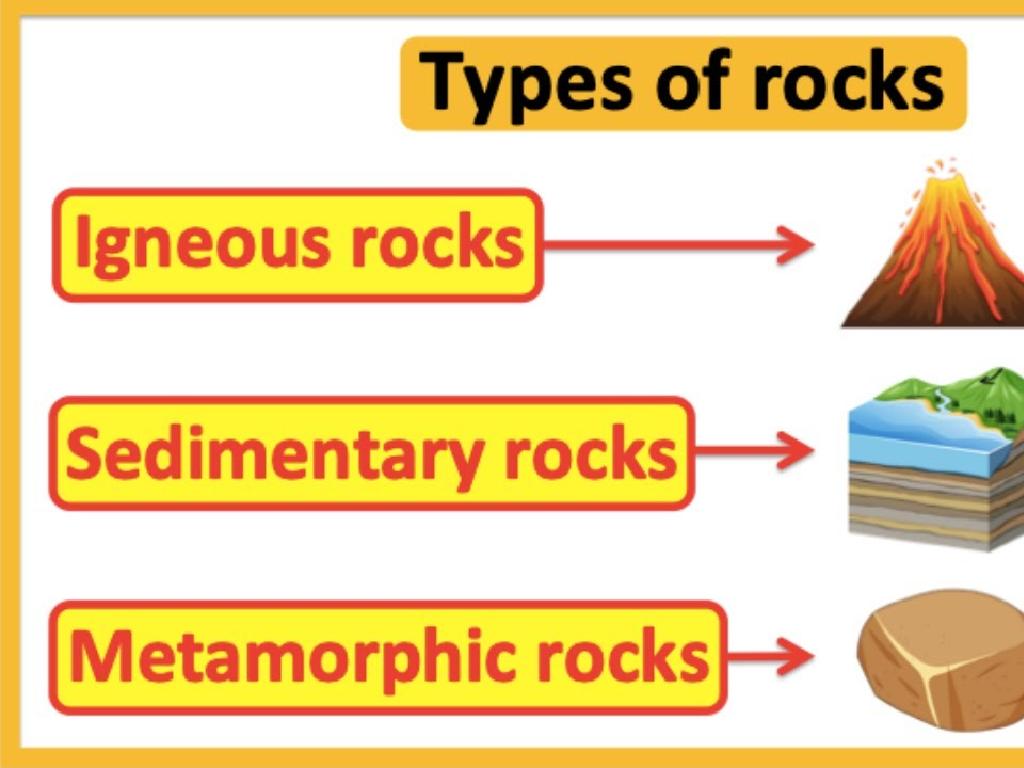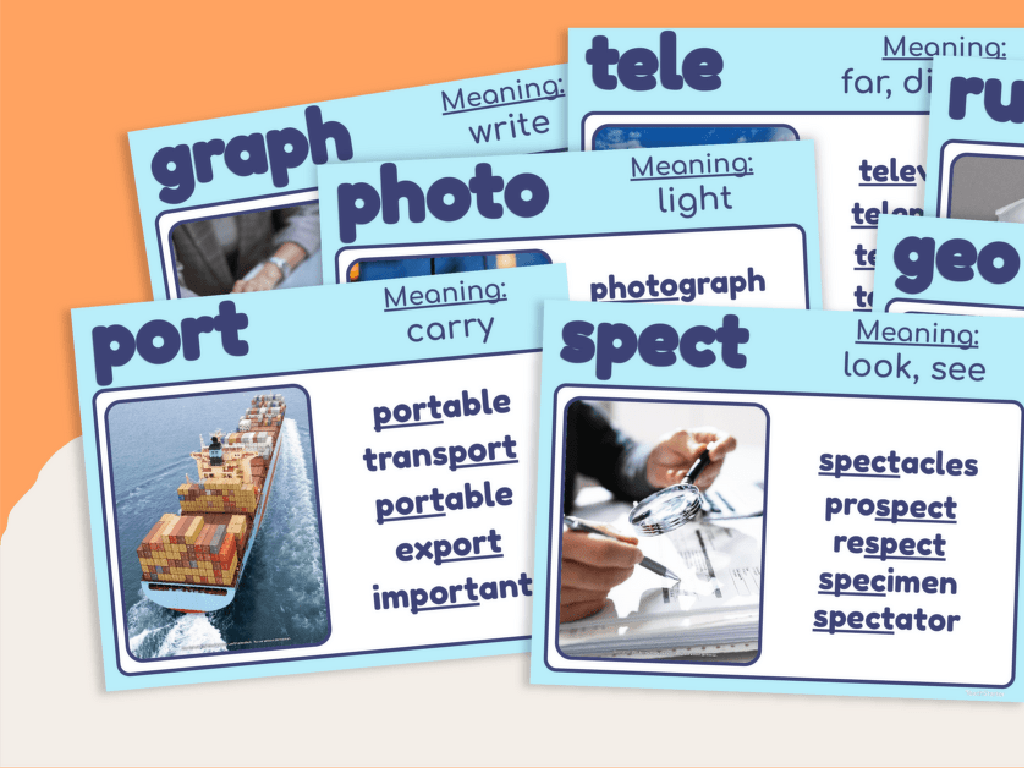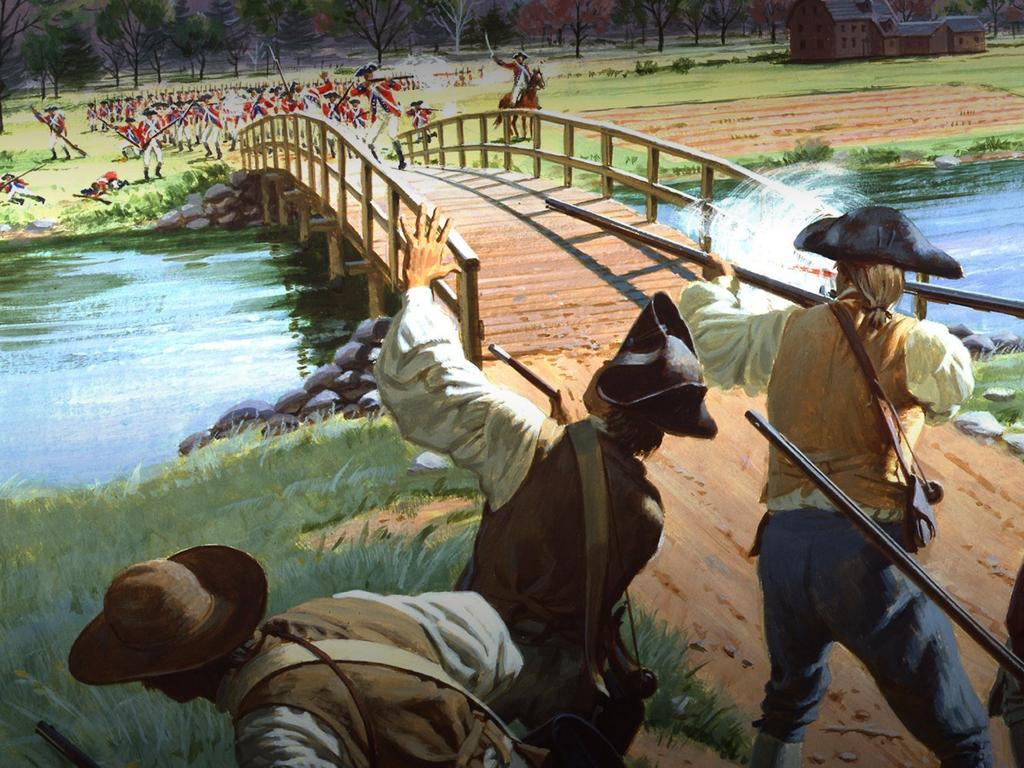Follow Directions On A Coordinate Plane
Subject: Math
Grade: Seventh grade
Topic: Coordinate Plane
Please LOG IN to download the presentation. Access is available to registered users only.
View More Content
Welcome to the Coordinate Plane
– Understanding the coordinate plane
– A two-dimensional surface for graphing points, lines, and curves.
– Coordinate plane in math and life
– Used for maps, graphs, and even video games.
– Review: X and Y axes
– X-axis is horizontal, Y-axis is vertical; together they form a grid.
– Plotting points and following directions
– Learn to locate points using coordinates (x, y).
|
This slide introduces the coordinate plane, a fundamental concept in mathematics that has practical applications in various fields such as geography, physics, and computer graphics. Begin by explaining the layout of the coordinate plane, emphasizing the perpendicular X (horizontal) and Y (vertical) axes that create a grid system. Discuss how this system is used to plot points, represent equations, and solve problems. Highlight real-life uses, such as navigation and visual representations of data. Conclude with a quick review of the axes and an activity to plot points using ordered pairs, reinforcing the lesson with hands-on practice.
Plotting Points on a Coordinate Plane
– Understanding point plotting
– To plot a point, we locate its position on the grid using an ordered pair.
– Identifying coordinates (x, y)
– Coordinates are a set of values that show an exact position, with ‘x’ for horizontal and ‘y’ for vertical.
– Interactive point plotting
– We’ll plot points as a class using coordinates to find their location on the plane.
– Practice plotting accuracy
– Ensure your points are precise; it’s essential for accurate graphing.
|
This slide introduces students to the concept of plotting points on a coordinate plane. Begin by explaining that plotting a point means to find its location on the grid using an ordered pair of numbers, known as coordinates. The first number, x, indicates the horizontal position, and the second number, y, indicates the vertical position. Engage the class in an interactive activity where they plot given points on a coordinate plane. Emphasize the importance of accuracy when plotting points, as this skill is fundamental in graphing. Provide several examples and encourage students to practice plotting points to build their confidence and understanding.
Navigating the Quadrants of the Coordinate Plane
– Understanding the four quadrants
– Quadrants are labeled I, II, III, IV starting from the top right and moving counter-clockwise
– Characteristics of each quadrant
– Quadrant I: (+, +), II: (-, +), III: (-, -), IV: (+, -)
– Identifying quadrants practice
– Given points like (3, 2) or (-5, -4), determine their quadrant
– Quadrant navigation activity
|
This slide introduces students to the concept of quadrants on a coordinate plane. Begin by explaining the layout of the four quadrants and their labeling system. Discuss the characteristics of each quadrant, specifically how the signs of the x and y coordinates differ. Provide practice examples for students to identify the quadrants of given points. As an activity, have students plot points on a coordinate plane and navigate from one point to another, identifying the quadrants they pass through. This will help solidify their understanding of the coordinate plane’s structure and how to interpret points within it.
Navigating the Coordinate Plane
– Understanding coordinate movement
– Learn to move points along the x (horizontal) and y (vertical) axis.
– Differentiating horizontal and vertical
– Horizontal moves are along the x-axis, vertical moves are along the y-axis.
– Example: A to B movement
– Starting at A(2,3), move to B(5,3): same y, increased x.
– Practical application of directions
– Use this knowledge to solve real-world problems involving maps and layouts.
|
This slide introduces students to the concept of movement on a coordinate plane, emphasizing the difference between horizontal and vertical movements. Begin by explaining that the coordinate plane is a two-dimensional space where we can plot points, lines, and shapes using an ordered pair of numbers. Then, clarify that moving horizontally means changing the x-coordinate while keeping the y-coordinate constant, and moving vertically means changing the y-coordinate while keeping the x-coordinate constant. Use the example of moving from point A to point B to illustrate these concepts. Encourage students to think of practical situations where they might use this knowledge, such as navigating a grid-like map or arranging furniture in a room based on a floor plan.
Navigating the Coordinate Plane
– Learn terms: Left, Right, Up, Down
– Relate directions to coordinates
– ‘Left’ and ‘Right’ move along the x-axis, ‘Up’ and ‘Down’ along the y-axis
– Class exercise: Navigate the plane
– Use the terms to move points on the plane
– Apply knowledge in a fun activity
– Students will plot points and move them according to directions given
|
This slide introduces students to the basic directional terms used when navigating a coordinate plane. Emphasize that ‘Left’ and ‘Right’ refer to movements along the x-axis, while ‘Up’ and ‘Down’ pertain to the y-axis. During the class exercise, provide students with a set of coordinates and directions to plot and move points on the plane. For example, start at (2,3), move ‘Up’ 2 units, ‘Right’ 1 unit. This will help them visualize how coordinates change with movement. Offer several scenarios with varying levels of difficulty to cater to different learning paces. Encourage students to think of the coordinate plane as a map and the exercise as a treasure hunt to make the activity engaging.
Real-World Applications of Coordinate Planes
– Navigate using map coordinates
– Maps use a grid system similar to coordinate planes for location pinpointing.
– Coordinate planes in video games
– Video games use X and Y axes to move characters and objects.
– Daily life: Understanding coordinates
– Coordinates help in tasks like giving directions or arranging furniture.
– Enhancing spatial awareness
|
This slide aims to show students the practical applications of coordinate planes beyond the classroom. Emphasize how map reading involves a grid system where the intersection of lines corresponds to specific locations, much like coordinates on a plane. In video games, characters and objects are often positioned using a coordinate system, which can help students relate to the concept. Everyday tasks, such as giving directions or organizing spaces, also involve an understanding of coordinates. Discuss how this knowledge can improve their spatial thinking and problem-solving skills. Encourage students to share their own experiences with coordinates in real life to make the learning process interactive.
Coordinate Plane Treasure Hunt
– Understand treasure hunt rules
– Work in pairs to solve clues
– Collaborate with a partner to decipher each clue
– Plot clues on the coordinate plane
– Each clue leads to a point; connect them in order
– Find the treasure’s location
|
This class activity is designed to help students apply their knowledge of the coordinate plane in a fun and interactive way. Students will work in pairs to solve clues, each leading to a specific point on the coordinate plane. They will plot these points and connect them in sequence to find the path to the treasure. This activity encourages teamwork, problem-solving, and practical application of coordinate plane concepts. Possible variations of the activity could include different sets of clues for each pair, clues that require performing operations to find the coordinates, or a timed challenge to add excitement. Ensure that each pair has a graph paper, pencils, and a set of clues. Walk around the classroom to assist and guide the students as they work through the activity.
Conclusion: Navigating the Coordinate Plane
– Recap key coordinate concepts
Reviewed axes, quadrants, plotting points
– Summarize directional learning
Discussed how to follow directions, move between points
– Engage in Q&A session
– Reinforce today’s takeaways
Key points: axes names, plotting points, moving up, down, left, right
|
As we wrap up today’s lesson on the coordinate plane, revisit the main concepts such as the x and y-axes, the four quadrants, and how to plot points. Summarize the process of following directions on the plane, including moving horizontally and vertically between points. Open the floor for a question and answer session to address any uncertainties students may have. This is crucial for solidifying their understanding. Finally, emphasize the importance of these skills in solving real-world problems and how they can apply this knowledge in future math challenges.






